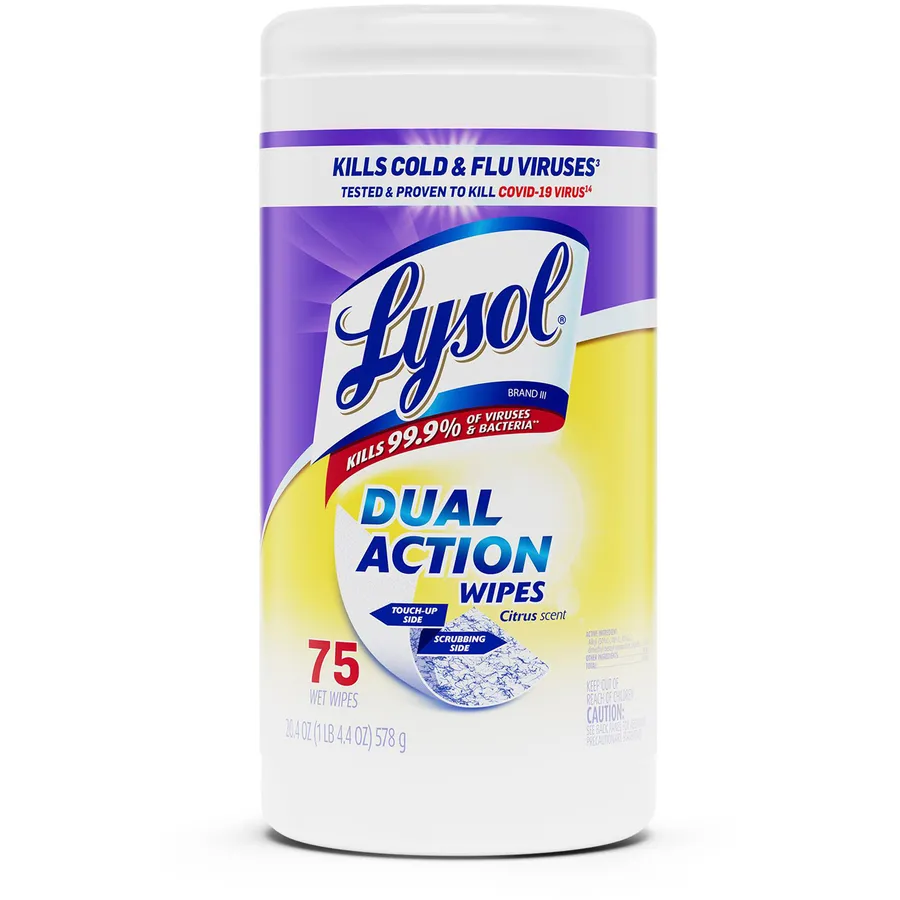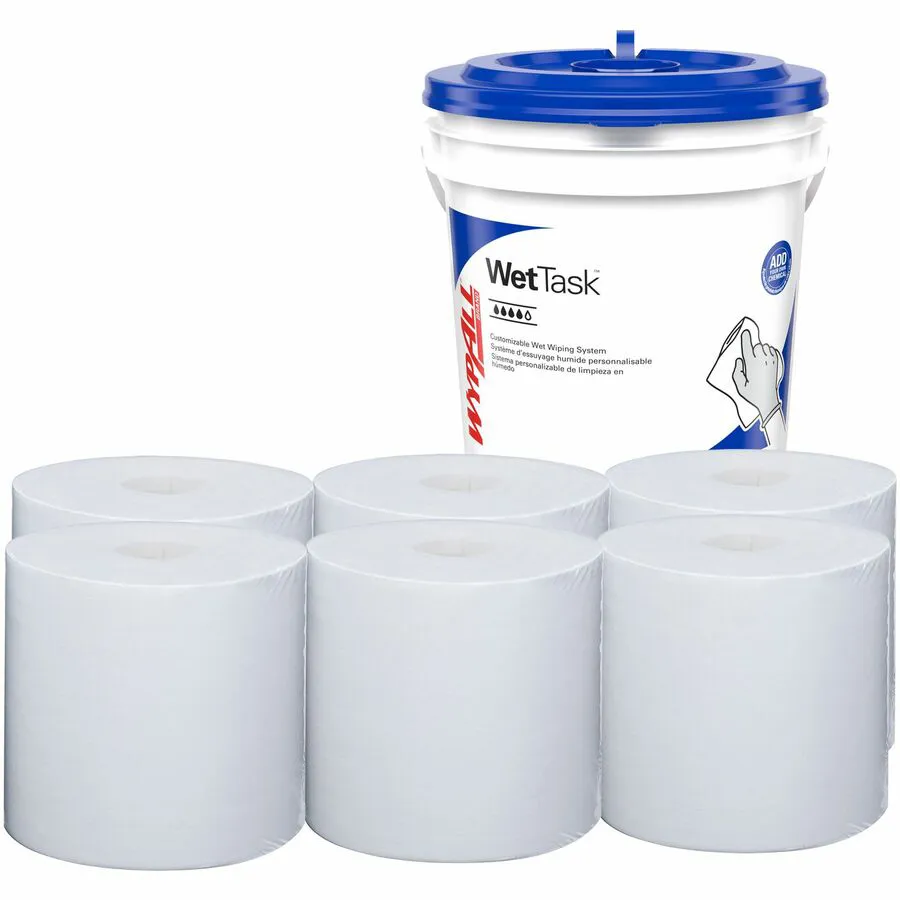
Disinfecting wipes perform a critical role in protecting employees today. When properly used, they disinfect surfaces, eliminating the transfer of germs and viruses. Often the disinfectant is combined with cleaning agents to clean and disinfect in one step.
Disinfecting wipes are not intended for hands. Hand sanitizer or hand sanitizing wipes with alcohol are the recommended products for hand sanitization wipers.
Disinfecting wipes are available in a variety of packaging options, offering different disinfecting chemicals targeting different environments and germs, as explained below. It is always important to read and follow disinfectant instructions and warnings.
All disinfectants require a certain dwell time (time sitting on a surface) to kill pathogens, varying depending on the disinfectant and the pathogen being targeted. Disinfectants are often simply allowed to air dry on surfaces, avoiding the toweling off of the disinfectant before its necessary dwell time.
We recommend using gloves when applying disinfectant. Click here if you would like to learn more about common disinfectants.
PACKAGING OPTIONS

CANISTERS & PACKS
Convenient hand-held canisters are the most common packaging for disinfecting wipes. They include a snap top lid that keeps the wipes from drying out. These canisters typically hold 35-80 wipes. Clorox and Lysol are the 2 market leaders. The most common disinfectant used for everyday wipes is a “quat”, an ammonium chloride compound. It is perfect for broad overall disinfecting. Wipes using hydrogen peroxide or bleach disinfectants are available as well for more specialized applications.
BUCKETS
Buckets of wipes pre-saturated with disinfectant are available to cost effectively service high volume/traffic areas. Each bucket typically holds 700-900 wipes, minimizing the chance of running out of disinfectant wipes.
Wipes pop out one at a time, eliminating the cross contamination that happens when multiple people handle smaller canisters. Pre-saturated refill rolls of wipes are available for cost effectively refilling the buckets, while also supporting the environment by reusing buckets.
Holders are available for some buckets for mounting them to walls. Each bucket system tends to be unique in that only the refills for that bucket will fit it, and only a wall stand meant for the bucket will work with that bucket. Buckets are available with a variety of disinfectants including ammonium chloride quats, hydrogen peroxide, bleach and alcohol.


MAKE YOUR OWN BUCKET
You can create your own disinfecting wipes bucket to save money vs. purchasing pre-saturated wipes. It starts with a roll of dry unsaturated wipes inside a bucket. You then fill the bucket with your preferred disinfectant solution, whether it be a quat, alcohol, or bleach based disinfectant. Please keep in mind that manufacturers of dry wipes often recommend against using them with high concentrations of bleach as a high bleach concentration can degrade the wiper.
HAND SANITIZING WIPES
Hand sanitizing wipes are alcohol based wipes that can be used in place of hand sanitizer liquids, gels and foam for sanitizing hands. They are available in a range of packaging as well.


FOOD SERVICE WIPES
Food service wipes are based on meeting FDA standards. They are typically dry wipes designed to release the correct amount of solution, per FDA standards, when used with quats, chlorine or hydrogen peroxide sanitizers. They come in a variety of sizes, strengths and colors, and are typically washable.
Colors enable easily identifying which towels should be used in which areas/applications. Many food service wipes are also antimicrobial to inhibit the growth of stain and odor-causing bacteria that can cause foodservice towels to smell “sour.”
COMMON DISINFECTANTS
AMMONIUM CHLORIDE (QUATS)
Ammonium chloride is a Quaternary Ammonium Compound (QAC), often referred to as a quat. The majority of hard surface disinfectants use this chemical. Quats offer good stability and toxicology, surface activity and compatibility with cleaner ingredients, and lack odor.
These properties make them well suited for consumer products that combine cleaning with disinfection. Typical end-use concentrations will have from 0.05 to 0.2% QAC’s, and require from 1 to 10 minutes to achieve disinfection. The majority of Clorox and Lysol canisters are based on quats.
HYDROGEN PEROXIDE
Hydrogen peroxide is a non-corrosive disinfectant that can be used both on hard and soft surfaces. It provides a fast kill time of as low as 30 seconds to 1 minute on most viruses and bacteria. Hydrogen peroxide has EPA-registered kill claims on over 38 pathogens, including 13 antibiotic-resistant ones. According to the CDC, household (3 percent) hydrogen peroxide is effective in deactivating rhinovirus, the virus that causes the common cold, within 6 to 8 minutes of exposure.
All of these facts make it an ideal disinfectant in high turnover environments. Hydrogen peroxide is the safest disinfectant to use on computer screens, LED’s and plexiglass as it is least likely to cause any “fogging” or scratching.
BLEACH
Bleach (sodium hypochlorite) is a concentrated disinfectant that kills a broad spectrum of microorganisms and controls mold and mildew. Germicidal bleach is stronger than regular household bleach, and typically is a 8.25% sodium hypochlorite solution.
Germicidal bleach is EPA-registered to kill over 70 organisms, with a typical kill time of 5 minutes. It can be used on a wide variety of hard surfaces, however, as it is a very strong oxidizer it has the potential to discolor surfaces and fabrics. Bleach is often used in hospital environments that have significant exposure to germs, including some of the more kill resistant germs.




